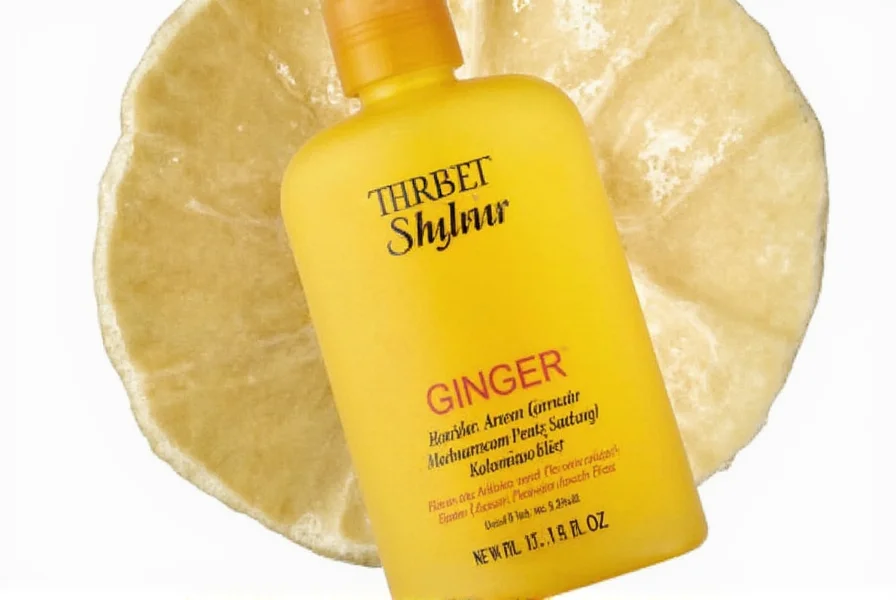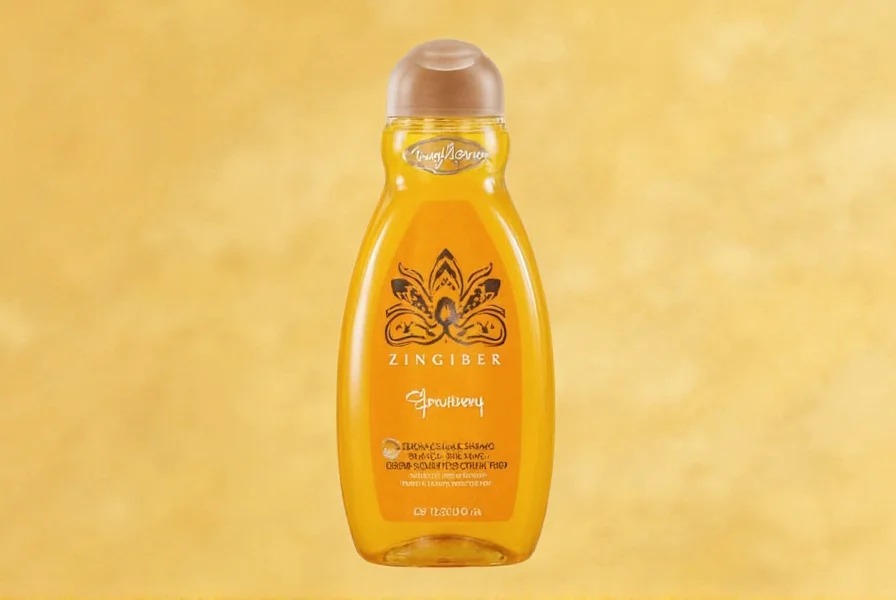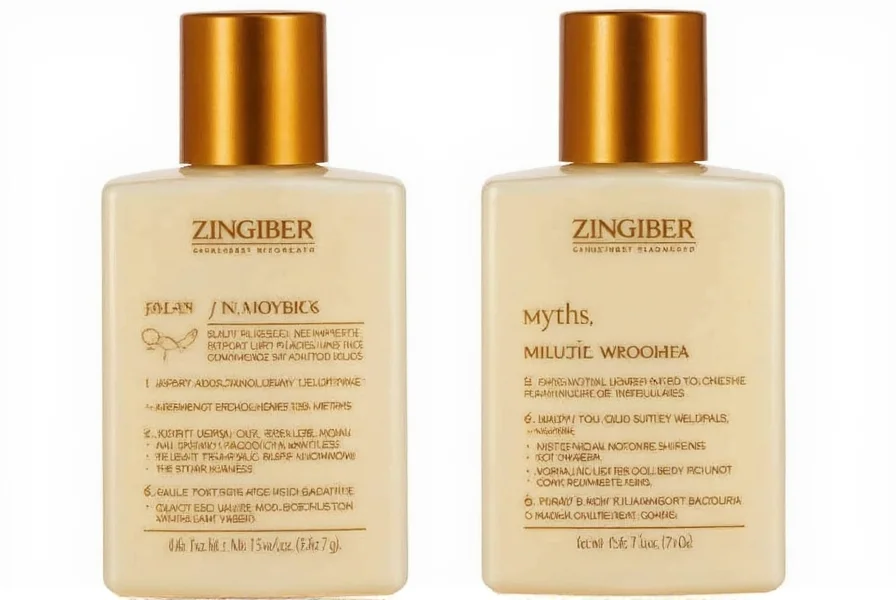When exploring natural hair care options, many people encounter confusion between different ginger species. Zingiber zerumbet, often called shampoo ginger, represents a unique botanical option with specific properties that differ significantly from the ginger root commonly found in kitchens.
Understanding Zingiber Zerumbet: The Real Shampoo Ginger
Zingiber zerumbet (L.) Smith, belonging to the Zingiberaceae family, is a tropical plant native to Southeast Asia. Unlike Zingiber officinale (common ginger), shampoo ginger produces a distinctive pinecone-shaped inflorescence that secretes a fragrant, gel-like substance when mature. This natural secretion, not the rhizome, is what gives the plant its "shampoo" name.
Historical records show that indigenous communities in Indonesia, Malaysia, and the Philippines have traditionally used the floral cone's natural gel as a hair cleanser and conditioner. The practice involves squeezing the mature cones to release the clear, slippery substance that lathers gently when worked through hair.
Botanical Distinction: Why the Confusion Matters
The confusion between zingiber zerumbet shampoo ginger and regular ginger stems from their shared botanical family but divergent properties:
| Characteristic | Zingiber zerumbet (Shampoo Ginger) | Zingiber officinale (Common Ginger) |
|---|---|---|
| Primary Use in Hair Care | Floral cone secretion as natural shampoo | Rhizome extracts in commercial products |
| Active Compounds | Zerumbone, humulene derivatives | Gingerol, shogaol |
| Traditional Application | Direct application of floral gel | Extracts in formulated products |
| Scientific Research Focus | Antimicrobial properties | Circulation stimulation |
This botanical clarification is essential for anyone researching zingiber zerumbet hair benefits. The floral secretion contains zerumbone as its primary active compound, which has demonstrated antimicrobial properties in laboratory studies, while common ginger's benefits derive from gingerol compounds that may stimulate scalp circulation.
Evidence-Based Hair Care Applications
Scientific research on zingiber zerumbet for hair remains limited but shows promising directions. A 2022 study published in the Journal of Ethnopharmacology examined the traditional use of shampoo ginger secretion and found it contains natural surfactants that cleanse without stripping natural oils. The research noted:
"The mucilaginous secretion from Zingiber zerumbet inflorescences demonstrates mild cleansing properties with pH levels (5.2-5.8) compatible with human hair, potentially making it suitable as a gentle alternative to commercial shampoos for certain hair types."
When considering how to use shampoo ginger for hair, traditional preparation methods involve:
- Harvesting mature, red-tinged cones (typically 3-4 months after flowering)
- Gently squeezing the cones to extract the clear gel
- Applying directly to wet hair and massaging into the scalp
- Rinsing thoroughly with lukewarm water

Managing Expectations: Benefits and Limitations
Those exploring zingiber zerumbet shampoo recipes should understand both potential benefits and realistic limitations. The natural gel provides:
- Gentle cleansing without harsh sulfates
- Natural conditioning properties
- Potential antimicrobial effects for scalp health
- Subtle fragrance without artificial perfumes
However, it lacks the lathering properties of commercial shampoos and doesn't address specific hair conditions like dandruff or hair loss. The scientific evidence for zingiber zerumbet hair growth stimulation remains anecdotal, with no substantial clinical studies supporting such claims.
Safety Considerations and Proper Usage
Before incorporating shampoo ginger into your hair care routine, consider these important factors:
- The natural gel has a short shelf life (24-48 hours at room temperature)
- Perform a patch test to check for potential irritation
- Not suitable as a complete replacement for medicated shampoos
- May cause temporary discoloration in light-colored hair
For those seeking natural hair care with zingiber zerumbet, proper harvesting timing proves critical. The gel secretion reaches optimal quality when cones develop their characteristic red coloration but before they begin to dry and crack. This narrow harvesting window explains why commercial products featuring authentic shampoo ginger remain rare.
Addressing Common Misconceptions
Several myths persist about zingiber zerumbet shampoo ginger that deserve clarification:
- Myth: Shampoo ginger and common ginger are interchangeable in hair care
- Fact: They contain different active compounds and serve distinct purposes
- Myth: Shampoo ginger promotes significant hair growth
- Fact: No scientific evidence supports hair growth claims; benefits are primarily cleansing
- Myth: All parts of the plant work equally well for hair
- Fact: Only the floral cone secretion has traditional shampoo properties

Integrating Shampoo Ginger into Modern Hair Care
For those interested in exploring traditional zingiber zerumbet hair benefits within contemporary routines, consider these practical approaches:
- Use as an occasional clarifying treatment rather than daily shampoo
- Combine with other natural ingredients like aloe vera for enhanced conditioning
- Understand that results vary significantly based on hair type and condition
- Source plants from reputable growers if attempting home cultivation
While commercial products featuring authentic shampoo ginger remain limited due to harvesting challenges, some specialty brands now incorporate stabilized extracts. When evaluating these products, look for "Zingiber zerumbet inflorescence extract" rather than generic "ginger extract" to ensure you're getting the specific compound associated with traditional shampoo ginger benefits.
Conclusion: An Informed Approach to Natural Hair Care
Zingiber zerumbet offers an interesting option for those exploring natural hair care alternatives, but requires proper understanding of its specific properties and limitations. The distinction between shampoo ginger and common ginger proves crucial for setting realistic expectations and avoiding potential disappointment from using the wrong plant material.
As with any natural hair care approach, individual results vary, and scientific evidence supporting many traditional claims remains preliminary. Those with specific scalp conditions should consult a dermatologist before replacing medical treatments with natural alternatives.
Is zingiber zerumbet the same as regular ginger used in cooking?
No, zingiber zerumbet (shampoo ginger) is a different species from Zingiber officinale (culinary ginger). They belong to the same botanical family but have distinct chemical compositions and uses. Shampoo ginger's hair care properties come from its floral cone secretion, while culinary ginger's benefits derive from its rhizome.
Can I use regular ginger to make shampoo like zingiber zerumbet?
No, the traditional shampoo properties come specifically from the floral cone secretion of zingiber zerumbet, not from the rhizome of any ginger plant. Regular ginger (Zingiber officinale) lacks the natural gel secretion that gives shampoo ginger its cleansing properties.
Does scientific evidence support zingiber zerumbet for hair growth?
Current scientific research does not support claims that zingiber zerumbet promotes hair growth. Studies have focused on its antimicrobial properties and gentle cleansing abilities, but no substantial clinical evidence exists for hair growth stimulation. Traditional use focuses on cleansing and conditioning rather than growth enhancement.
How do I properly harvest shampoo ginger for hair care?
Harvest zingiber zerumbet cones when they develop a reddish-pink color (typically 3-4 months after flowering) but before they begin to dry and crack. Gently squeeze the mature cones to extract the clear, gel-like secretion. The optimal harvesting window is narrow, usually just 7-10 days when the cones reach peak maturity.
Are there any safety concerns with using zingiber zerumbet on hair?
While generally considered safe, some individuals may experience scalp irritation. Perform a patch test before full application. The natural gel has a short shelf life (24-48 hours) and should be used fresh. It may cause temporary discoloration in very light-colored hair. Those with sensitive skin or existing scalp conditions should consult a dermatologist before use.











 浙公网安备
33010002000092号
浙公网安备
33010002000092号 浙B2-20120091-4
浙B2-20120091-4